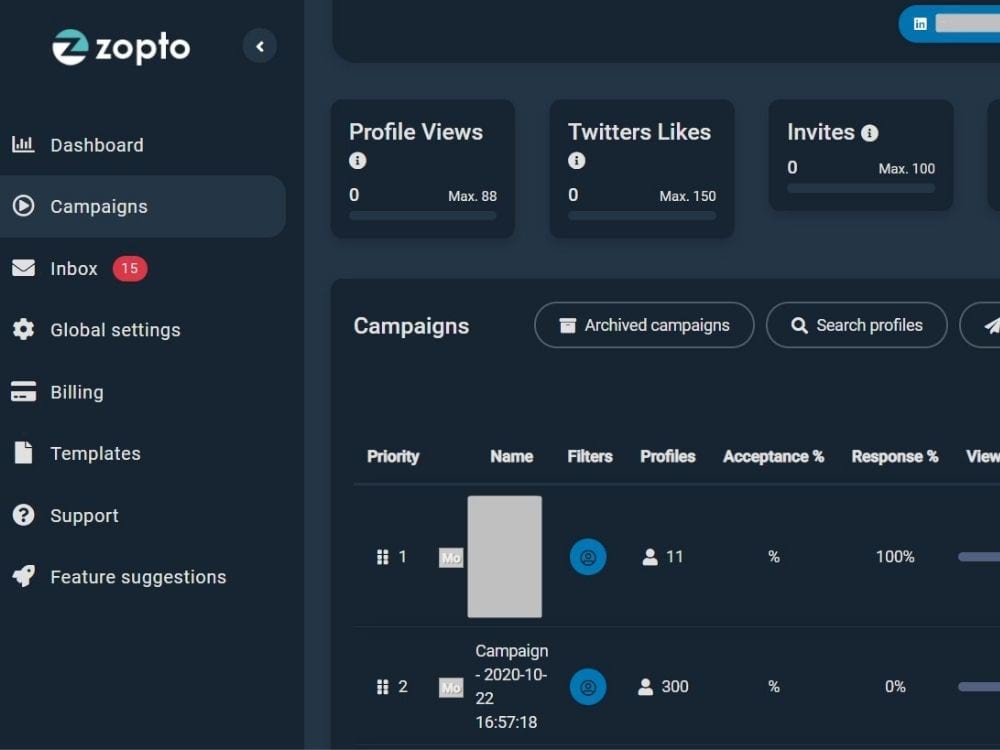Rewind a year and your sales revenue looked nice and healthy. Then bang; COVID-19 arrived; lockdown was enforced and suddenly sales slowed right down. That’s ok if you have solid sales pipelines you can tap into with prospective buyers and an action plan.
But if, like many sales reps and sales managers, you’ve let managing your sales pipelines slip during the good times, you’re in trouble. You never know when disaster might strike. But as we slowly start to come out of the coronavirus pandemic, now’s the time to review your sales cycles, clean up your sales pipelines and set your business up for success in 2021.
What Is a Sales Pipeline?
Firstly, let’s define a sales pipeline because if you don’t know what it is, how can you build an effective pipeline? Also known as a customer pipeline, it maps out the process of a potential buyer’s journey from their first introduction to a product or service by a sales rep, through to their purchasing decision.
A sales rep or sales manager will manage multiple sales prospects that are at different stages in the sales cycle. An effective sales pipeline will enable the marketing team and sales team to understand their potential buyers, prospective buyers at any given time.
As well as providing detailed contact records, tracking it will also provide valuable data on the number of proposals per month and the deals per month over a period of time. Sales managers are able to determine the average deal size to help with forecasting and budget setting.
However, a sales pipeline should not be confused with a sales funnel; whilst similar, they are focused on different aspects of the sales cycle. The sales funnel stages are all about sales leads and demonstrates in detail the customer’s journey, from initial awareness through to decision making.
The sales pipeline is the customer’s journey in the sales cycle from the sales rep’s point of view, i.e. from the point the sales rep qualified the lead from the marketing team, introducing the prospect to the product or service, through to closing the deal.
Harvard Business Review’s study found that there was a difference of 18% in revenue growth between companies that had a formal sales process, and companies that didn’t.
In addition to this, the study also found that the B2B companies that managed their pipeline practices efficiently saw a 28% higher revenue growth than companies that hadn’t mastered the art of the sales pipeline.
For B2B companies, in particular, the benefits of healthy sales pipelines include:
- An improved sales process.
- Improved data for future business forecasting.
- Ability to analyze and adapt business sales strategies.
- Ability to manage and allocate business resources to help sales reps manage and close deals.
- Ability to review sales progress over a period of time.
Why Is a Sales Pipeline Important?

A survey by Salesforce revealed that 68% of companies haven’t identified or measured their sales funnel. In addition, 79% of marketing leads aren’t converted into sales. This alone presents a good case for developing a sales pipeline.
Marketing teams generate leads that are passed onto sales reps to follow up. These leads pass through the sales process and are managed through to conversion. Without conversions, there is no growth. Gartner’s 2020 CEO and Senior Executive Survey found that business growth is a top strategic priority for medium and large-sized company CEOs.
A well-managed sales pipeline enables salespeople to nurture leads through to converting the lead into a customer. When you combine this with a growth strategy, useful insights can be gathered including where leads are coming from, how long it takes to close a deal and the value they are to the business.
An effective, accurate sales pipeline will enable a business to:
- Forecast future and new business.
- Develop performance KPIs that track relevant sales activities in the pipeline.
- Assess sales plans and identify the gaps in the sales process.
- Manage your leads and sales prospects.
- Monitor sales performance.
- Plan the use of resources to ensure sales reps have the necessary tools.
The Sales Pipeline Stages
There are six key stages to a detailed sales pipeline that follows the sales process from the initial contact with potential buyers through to lead conversion.
1. Prospecting – the first stage is to identify prospective buyers who need your product or service. How prospects are identified varies from company to company depending on their lead generation process. There are lead generation services like bant.io that can do this for you.
In most cases, lead generation comes from the marketing department’s initiatives, such as social media activity, via downloadable content and other channels utilized in the company’s marketing process.
In addition, sales reps can search for cold leads based on an ideal customer profile. For example, companies may use tools, like Zopto’s automated LinkedIn lead generation solution, to identify hot leads.
2. Qualifying – possibly the most important step in the sales process, qualifying prospects is crucial to ensure they are the best fit for your product or service. By qualifying the prospect, sales reps can avoid wasting time on leads that are unlikely to convert into a customer. Remember, qualified leads and qualified opportunities.
This stage also sorts the hot leads from the warm and cold leads. Following the initial contact with a lead, customer research is essential to identify your target audience. For example:
- Do they need your product or service?
- Are they ready to purchase now or within a time period?
- Do they have the budget to be able to purchase your product or service?
- Are you talking to the decision-maker or do they need to defer to someone else?
3. Set lead generation goals – before you run any lead generation campaign, it is essential to set your campaign goals according to what you want to achieve from the campaign.
According to the Pareto Principle, around 20% of your leads will provide approximately 80% of your revenue.
Lead generation goals will ensure that you focus on your targeted audience, i.e. an audience that is interested in your product or service, are ready to make a buying decision and are likely to convert into a customer. Sales goals keep salespeople on track and help them maximize sales opportunities.
4. Contact – every sales rep has their own contact method, be it through email, text, social media or phone, by which they make the first contact with a prospect. The aim is to arrange meetings with prospects, albeit online in recent months, to demonstrate and pitch your product or service.
5. Build the relationship – the ‘hard sell’ approach by sales reps is no longer used. Today, sales reps should be nurturing potential buyers and build a relationship with them. It is a great opportunity to build trust with prospects to ensure that the relationship goes beyond the first purchase.
6. Closing – the aim of any sales rep is to close the deal. This stage is also down to a sales rep’s method of finalizing a deal. Some B2B prospects will be ready to purchase relatively quickly; others may take longer. Research by CSO Insights revealed that 27% of sales reps say that a long sales cycle is one of the biggest barriers to effective sales. Keeping the sales process short is more likely to generate a better outcome.
How Do You Build a Strong Sales Pipeline?

Your sales pipeline is only as effective as the data it contains. By identifying your buyer persona and aligning it with the sales stages, you can develop a solid prospect base.
Avoid having too many stages in the sales cycle. Some industry experts say that more than seven stages can be counter-productive. Streamline the sales process so that it’s not too long. Make sure the transition from one stage of the sales process to the next is fluent and a natural step in the buyer journey.
Sales pipeline management is an important part of the sales process. Managing contact records and keeping them as detailed and up-to-date as possible will build a strong sales pipeline. Take the time to review your pipeline over a period of time. If you have contacts in your pipeline that remain at a particular stage in the sales process for too long a period of time, re-qualify them or re-classify them as a future prospect or as a dead lead.
Create an action plan to follow up and maintain contact with prospects. Buyers have more choices than ever and will do their research to ensure they are making the right decision. Retaining a customer is as important as closing a deal. Create short, medium and long-term sales pipelines with the short pipeline being active with prospects that are likely to purchase within a shorter period of time.
Consider using lead scoring as a way to evaluate your prospect base, and speed up your sales pipeline. Your pipeline shouldn’t include leads that are not in a position to buy or don’t have the necessary budget.
It’s vital that sales teams work closely with marketing teams to nurture prospects and generate regular content. Using consistent messaging and managing feedback adds value to the sales process. A study by Sirius Decisions found that companies who have sales and marketing teams that work together in alignment will achieve a faster growth rate of 24%, and a faster growth profit of 27%, over a year.
Managing Sales Pipeline Metrics
There is a saying in the business world that is particularly relevant concerning sales pipelines – “If you can’t measure it, you can’t improve it.”
Your sales pipeline will evolve and change all the time. Key sales metrics will enable sales reps to constantly optimize their effectiveness. Using metrics to monitor and measure your sales pipeline will provide valuable insights into its health. The sales metrics include:
- Conversion/close rate – how many of the prospects in the sales pipeline are converting into customers? The conversion rate and closing rate are two key indicators of how a sales rep is performing.
- Average size of deals – of the prospects that convert to customers, how big are the deals?
- Prospect acquisition cost – how much does it cost to acquire a new customer, on average? This metric will help you to understand the return on investment.
- Number of new qualified leads – how many new qualified prospects are willing to buy and have the budget?
- Average sales cycle – how long is the average sales cycle? If it’s too long, consider reducing the stages of the sales cycle.
- Proposals per month – how many new proposals are being sent per month?
- Deals per month – how many deals are being closed per month? The closed deals per month help to determine if revenue goals are being met and are aligned with the overall strategies of the organization.
- Win/close rate – what percentage of prospects are converting into customers? This is the percentage of deals that are being closed and focuses on the average win rate.
Whilst no sales rep wants to lose a deal, it is an opportunity to understand why the prospect didn’t convert into a customer. It could be any number of reasons, such as the price, the product’s features, even the customer service.
Tools to Create the Perfect Sales Pipeline

Lead generation is a top priority for many sales managers and sales teams. There are a variety of sales tools that can help generate new leads and track a prospective buyer’s journey through the sales process. If you’ve not developed a sales pipeline before, using a sales pipeline template tool is a great way to start.
Zopto’s solution enables companies to attract hot leads through LinkedIn by targeting your ideal customers on the social media channel. Zopto’s automated campaign tools search for prospective buyers via LinkedIn Premium or Sales Navigator, and generate a list of hot leads per month.
You choose your filters, such as location, company size, industry and seniority level, as well as the level of engagement you wish to initiate with prospects. From there, Zopto’s features like connection invites, Twitter engagement, profile view generator and sequential messaging, helps to determine the hot leads.
The benefit of a solution like Zopto is that it can be integrated into your marketing team’s lead generation process. Acquiring new leads that are outside of your sales reps’ network allows companies to enter new markets, and adds value to their sales pipelines. A live dashboard incorporating detailed contact information and statistics provides a visual snapshot of the sales pipeline. It enables sales teams and sales managers to monitor and track their Zopto campaigns, all in the cloud.
Other useful tools to create the perfect sales pipeline are:
- Sales tracking and forecasting – being able to track and forecast sales pipeline allows sales managers and C-level executives in their decision-making. Based on sales forecasts and predicted future performance, the right level of resources can be allocated. With accurate sales data, budgets can also be determined.
- Activity reports – sales tracking solutions will provide up-to-date information on your leads and where they are in the sales process. For sales reps, it allows them to see the number of times a prospect has been contacted, how they were contacted and whether the prospect needs to be re-classified. For sales leaders, they are able to track and evaluate their sales reps’ progress, and develop more effective sales strategies for overall sales improvement.
- Loss reports – lost deals are inevitable. Being able to record and track the deals that have been lost, and the reasons why, helps to improve the sales process. It also helps in sales forecasting.
If you don’t track and measure sales pipeline results, there is no way of assessing the true picture of a company’s revenue generation. Sales metrics provide valuable data that helps to identify what’s working and what isn’t, enabling marketing teams to channel their resources into the sales strategies that are proving effective.
Keeping Your Sales Pipeline Full
Maintaining a full sales pipeline and spending time prospecting for new leads is an ongoing task; you don’t want to be in a position where sales have come to a halt because there aren’t any hot leads in the pipeline.
- Develop your prospect base – set aside a period of time on a daily basis to focus on developing and nurturing your prospects. Remember, a lost prospect is gone forever.
- Effective follow-up – always follow-up new leads as well as prospects at different stages in the sales cycle. Just because a prospect isn’t ready to buy now, they may be in the future. Ignoring them will ensure they change their allegiance to a competitor. Don’t forget to maintain follow-ups with existing customers, too. Effective follow-up builds a relationship with the prospect and keeps you in their mind.
- Upsell/cross-sell to existing customers – upselling and cross-selling are proven client retention strategies. Consider the product or service the customer has purchased; are there any other related offerings you can pitch to an existing customer? Don’t try and sell an existing customer a product or service that has nothing to do with their business.
- Ask for referrals – don’t be afraid to ask existing customers for referrals in order to build a strong prospect base.
- Consider social selling – social media is one of the primary lead generation sources for many B2B companies. Utilize social media channels to target your ideal customers and build customer engagement.
Following a difficult 2020 for companies worldwide and with 63% of professionals agreeing that companies don’t manage their sales pipelines effectively, now’s the time to focus on sales pipeline development to maximize opportunities in 2021.
Not managing your pipeline successfully can cause you to lose valuable leads. Using the Zopto dashboard, you can easily manage all your prospects and interactions, all while attracting new hot leads. To learn more, contact one of our representatives today!
FAQs
What is sales pipeline development?
It is the development of a company’s sales process that identifies the sales cycle stages in a company’s action plan to generate and manage leads, or prospects, from initial contact through to sales conversion.
How do I build a sales pipeline that closes deals consistently?
To build a strong sales pipeline that converts prospects into customers consistently:
- Define your sales cycle stages.
- Work out how many hot prospects you require to hit your sales target.
- Develop your sales process that is aligned with sales and marketing strategies.
- Build a strong prospect base.
- Implement an effective follow-up contact method to nurture and build relationships with your prospects in your sales pipeline.
- Create an action plan for your sales process that includes follow-up calls.
- Monitor, track and measure your sales pipeline on a regular basis.
How do I clean up my sales pipeline?
Your sales pipeline is only as good as the data it contains. To clean up your sales pipeline:
- Review your pipeline inventory alongside your sales process. Determine how long your sales process, i.e. how long it takes to close a deal. If it’s too long, look at ways to reduce the number of stages and streamline the process.
- Develop an action plan, with concrete actions, to re-engage with your prospects.
- Pressure test your sales pipeline.
- Don’t leave ’til tomorrow what can be done today.
How do I run a sales pipeline reviews?
Tracking and measuring your sales pipeline is essential in closing sales deals and generating revenue. Sales managers will regularly ask sales reps to run a sales pipeline report to ensure they are on track to hit their targets, and identify any issues that they need help with. To run a review and determine the sales pipeline performance:
- Ask the sales rep to run a report that provides a summary of progress to date. The summary should include the number of new prospects and new proposals, the number of new, qualified leads and deals, the average size of deals, the average sales cycle and the conversion/close rate.
- Identify any issues that may arise and any challenges the sales rep may be facing, such as being behind target, fewer deals being closed or obstacles that are stopping prospects from converting to customers including how they manage the sales presentation stage.
- Create an action plan with concrete action items that clearly set the next steps, such as qualifying new leads, talking to the decision-maker and negotiating the price.
- Address all action items as soon as possible to stop the problem from becoming worse.
- Follow-up with the sales rep after a period of time to ensure that the review’s action items have been completed.

